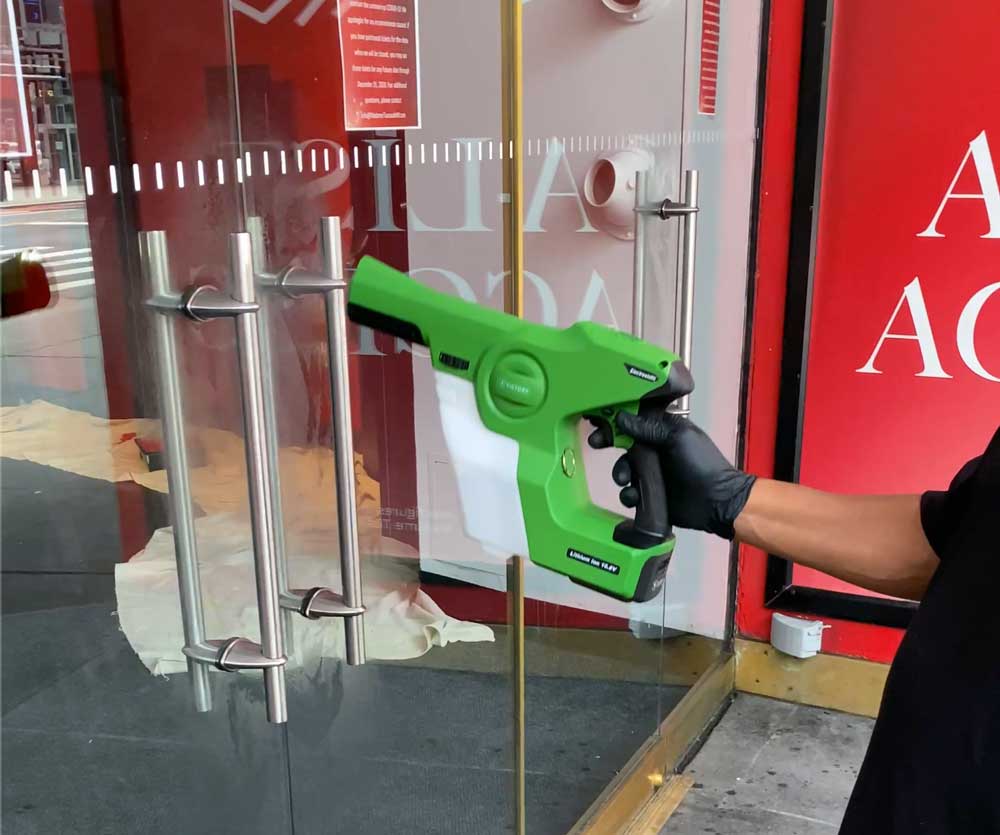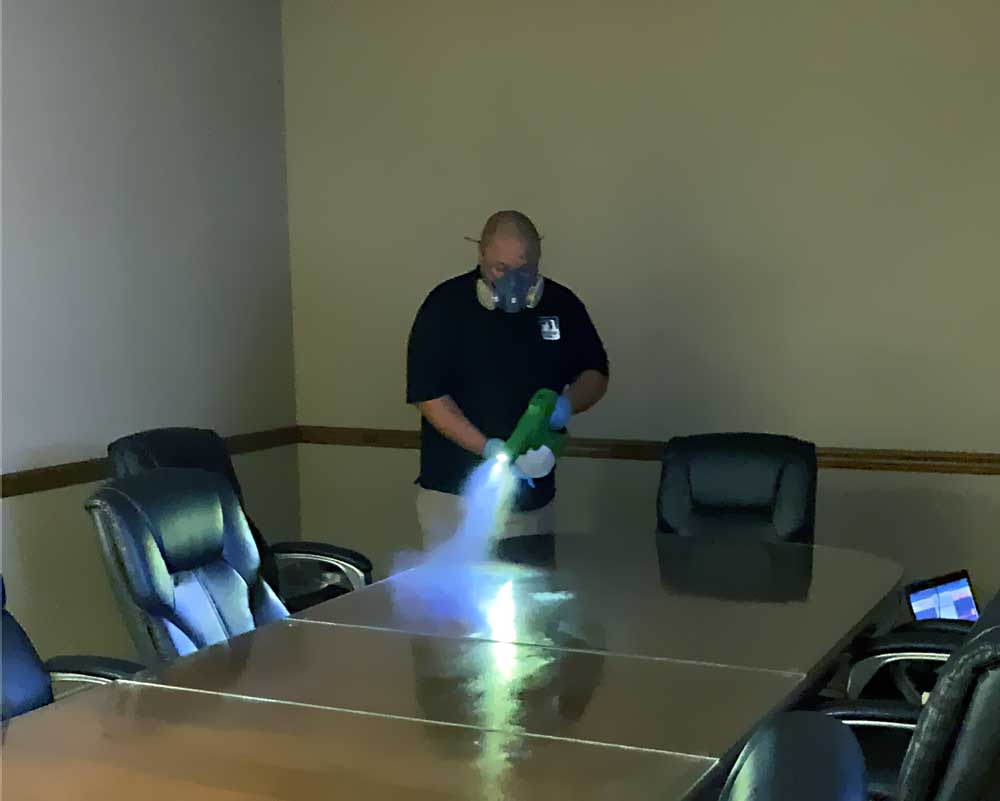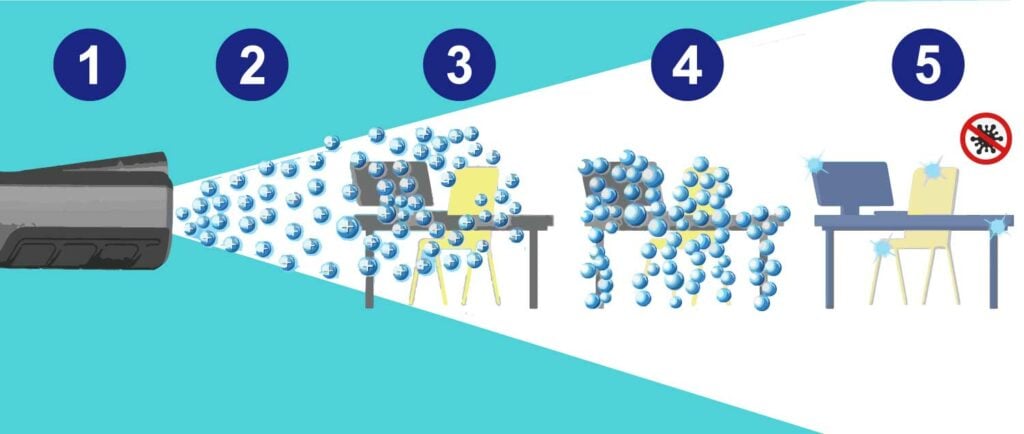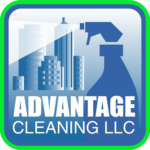Professional Disinfecting Company
Commercial Disinfection Services
Your commercial disinfection services company in New York, New Jersey, and Connecticut, independently owned and operated. We take pride in our customers’ appearance, health, and safety.
Request a Quote
We will contact you within the hour to start working on your quote.
Your contact information
Disinfection Services
Quality commercial cleaning and disinfecting is time-consuming, and requires training to ensure that the cleaning and disinfecting process is done correctly.
We provide disinfecting services for some of our community’s most prominent museums, attractions, offices, retail stores, and medical offices in New York, New Jersey, and Connecticut.
We are trained and certified to conduct the process of electrostatic disinfecting, and equipment handling of electrostatic disinfecting sprayers, correct application of disinfectants, necessary dwell-time, and safety precautions. We make it easy for you to get the high-quality commercial cleaning and disinfecting services that ensure your uninterrupted operation and compliance.

Our Cleaning & Disinfecting Services
Cleaning & Disinfecting Service
As part of your preventive health and safety measures, we help you eliminate germs, and viruses with scheduled routine cleaning and sanitizing, followed by disinfecting of your facilities.
Request a Quote
We will contact you within the hour to start working on your quote.
Your contact information
URGENT Cleaning & Disinfecting
If you need an urgent disinfecting of your facilities because you suspect, or have a confirmed case of a virus occurrence, please call us immediately to schedule a disinfecting.
Our Cleaning & Disinfecting Services
Our disinfecting services mirror the recommendations from The Centers for Disease Control and Prevention (CDC), which strictly recommends a thorough cleaning before disinfecting, in order to deliver a satisfactory level of health and safety from germs, and viruses, including COVID-19.
High-Touch Surfaces
Clean, wipe down, and disinfecting of all high-touch surfaces, desks, reception area, offices, conference rooms, and common areas.
Floors
All carpets will be thoroughly vacuumed and hard surface floors mopped & scrubbed before general disinfecting of all areas in your facility.
Dusting
High dusting of light fixtures, cabinets, window blinds, vents, and other areas that accumulate dust.
Walls
Cleaning the walls, wipe down, polishing all vertical high-touch glass and metal surfaces before disinfecting.
Kitchen
Cleaning and sanitizing all high-touch points, including all counter tops, cabinets, tables, chairs, drawers, water fountains, coffee machines, refrigerators, micro wave ovens etc., before final disinfecting.
Doors & Panels
Cleaning and sanitizing all doors, door knobs, light switches, operator panels in all areas of the facilities before final disinfecting
Offices
Cleaning and disinfecting of high-risk contamination areas like desks, monitors, keyboards, chairs, copy machines, printers, phones, and all fixtures through out the offices.
Restrooms
Complete cleaning and sanitizing of restrooms, toilets, partitions, bathroom stalls, kick plates, push plates, doors.
Clean and sanitize, all fixtures within the restroom, such as sinks, dispensers, mirrors, and garbage cans.
Empty garbage cans and replace liners.
Sweeping and moping all floors in all bathrooms
Entrance
Cleaning and sanitizing of all high-touch points in the lobby, including elevator doors, elevator buttons, front desk, carpets, hand-rails, and door handles.
Cleaning Before Disinfecting
We follow the Centers For Disease Control (CDC) cleaning process guidelines of cleaning before disinfecting in order to achieve maximum (99%) disinfecting levels according to the dwell times specified in the chemical agent and associated Safety Data Sheet.
We only use disinfectants listed on EPA List N: Disinfectants for Coronavirus (COVID-19).
CDC’s cleaning and disinfecting guidelines suggest regular cleaning and disinfecting, when needed, by following the proper channels from a professional commercial cleaning service company.


Electrostatic Disinfecting Spraying
After a thorough cleaning, disinfecting and sanitizing begins. The disinfecting process is done using electrostatic disinfecting sprayer technology, with EPA List N approved chemical agent, to disinfect and eliminate 99% of germs and viruses.
Disinfecting Quality Control
Our Disinfecting System
We provide you with a comprehensive scheduled disinfecting and URGENT disinfecting service, with specific checkpoints, to ensure quality in our cleaning and disinfecting services. Supported by our cleaning and disinfecting system available on our smartphones, we can ensure the best quality to our customers.
Our Quality Control System
The cleaning and disinfecting system used by our professionals is also used by our quality inspectors to ensure the best disinfecting quality in our service to you.
Easy Communication
We make it easy for you to communicate with us. All our customers have access to download a smartphone APP to our cleaning system, so you can easily communicate your needs to us.

Locations we serve
Trained & Certified Disinfecting Professionals
Cleaning, sanitizing, and disinfecting services are performed by our disinfecting professionals who are thoroughly trained in handling electrostatic disinfecting sprayers and meeting pathogen-handling standards set by the Occupational Safety & Health Administration (OSHA).
We utilizes Fundamentals Training Courses offered by the Global Bio-risk Advisory Council related to cleaning and disinfecting services.
The focus is on applying preventative, response, infection control, and contamination control measures to known or potential infectious disease risk situations, which includes SARS & COVID-19.








Let’s talk about disinfecting and sanitizing your facilities
Contact us for a free on-site walk-through and estimate that includes a detailed cleaning plan and time frame for your commercial facilities.
Request a Quote
We will contact you within the hour to start working on your quote.
Your contact information
What Our Customers About Us
“Advantage Cleaning have supported me through two companies I worked for. They are prompt, professional and do a thorough job each time they clean. It made perfect sense when I moved on to a bigger retail company to ask if they would work with me again. In business its always a comfort to know a business you rely on to keep your space spotless, never lets you down.
– Anne Bassani Mena, Vivienne Westwood
What Is Electrostatic Disinfecting?
Electrostatic disinfectingg requires a specialized sprayer designed for the maximum disinfecting coverage possible. Electrostatic sprayers combine the disinfectant solution with air and an electrode to give it an electric charge.
When the solution is charged, it’s sprayed onto the surfaces of the office such as desks, tables, chairs, door handles, and countertops. The positively charged disinfectant bonds with any negatively charged surface. This makes the disinfectant coat evenly, killing all pathogens on the surfaces.
How It Works
- Electrodes create an attractive charge to the solution
- Compressed air creates a quiet, powerful liquid flow
- Charged particles are attracted to surfaces
- Solution reaches and wraps around surfaces
- Each surface is uniformly coated with solution

Mold vs Mildew – What is the difference and how to clean it
This article will help you understand the differences between mold and mildew, provide cleaning guidance,…
Frequently Asked Questions
The Centers For Disease Control and Prevention (CDC) recommends that businesses use processes like deep cleaning, sanitizing, and disinfecting to prepare their facilities for safe re-opening. But beyond that—whether operations did or did not close during the pandemic—continuing to deep clean, sanitize, and disinfect premises on a regular schedule going forward will be critical in order for companies to meet the growing expectations of customers and employees alike. Businesses that regularly deep clean, sanitize, and disinfect their facilities have a far better chance of meeting consumers’ and employees’ expectations—and of increasing their level of comfort about frequenting or working at these facilities— than those that do not.
Reputable companies require their employees to wear personal protective equipment (PPE) as recommended by the CDC. This means eyewear with protective sides, as well as gloves, masks, coveralls, and disposable shoe covers (to prevent the transfer of soil, residue, and germs from the bottom of the shoes to the floor).
Training is also a must for commercial cleaning company teams. All cleaning technicians undergo thorough, rigorous training in meeting Hazardous Waste Operations and Emergency Response (HAZWOPER) standards for handling blood-borne and other pathogens encountered during deep cleaning jobs. HAZWOPER standards are set by the Occupational Safety and Health Administration (OSHA), whose mission is to ensure safe, healthful working conditions by setting and enforcing standards as well as by providing training, outreach, education, and assistance.
The process starts with “lifting” all soil and residue from high-touch surfaces, such as doorknobs, cabinet knobs, computer keyboards, faucets, toilet-flushing apparatus, and many others. This step is important because dirt, dust, and oil, act as barriers between these surfaces and any sanitizing agents used. When these barriers are present, the disinfectants cannot effectively destroy or inactivate the microorganisms deep cleaning, sanitizing, and disinfecting are meant to eliminate.
Disinfectant is applied using a technique called electrostatic spraying. Particles of disinfectant discharged by the sprayer contain enough moisture to “wrap around” surfaces, even reaching areas that are often missed during routine cleaning. The disinfectant is not wiped off and properly decontaminates and sanitizes surfaces in one minute.
In addition to its “wraparound” capabilities, electrostatic spraying offers many advantages over other ways to apply disinfectant. For starters, most surfaces are neutral or negative. Electrostatic spraying imparts a powerful positive charge on the disinfectant as it leaves the spray nozzle, making it more easily attracted and adhesive to surfaces. The end-result is more consistent coverage with less waste. What’s more, electrostatic spraying is not only more effective than wiping; it is 50 times faster as well as 10 times quicker than electric spraying. About 54,000 square feet of surfaces of varying sizes, including hard-to-reach surfaces, can be disinfected and sanitized in one hour when electrostatic spraying is used.
According to the EPA, disinfectants are antimicrobial pesticides that destroy or irreversibly inactivate microorganisms on surfaces and objects. Disinfectants come in two categories, hospital-grade products used for infection control and general use products for household applications. The EPA maintains a list of chemicals deemed effective against “emerging pathogens”—namely, the coronavirus that causes COVID-19 as well as other newer viruses that are difficult to kill.
Regular cleaning of facilities via routine disinfecting services has always been important and is even more so in the wake of the COVID-19 pandemic. This type of cleaning should occur daily, weekly, bi-monthly, or monthly, depending on the volume of foot traffic (both employee and visitor).
Cleaning removes germs, dirt, and impurities from surfaces to lower the amount of germs and reduce the risk of spreading infection. The cleaning process involves the use of using soap and water to physically reduce the number of germs from surfaces but does not kill the germs.
Sanitizing lowers the number of germs on surfaces or objects to a safe level, and is most effective when done after the surfaces have been cleaned with soap and water. This process involves either cleaning or disinfecting the surfaces to effectively lower the risk of spreading infection.
Disinfecting kills germs. Disinfecting works by applying chemicals, using an electrostatic sprayer or cloth, to kill germs on surfaces or objects. The disinfecting chemicals works best when done after the surfaces have been cleaned as it does not remove impurities but very effective for killing germs.



